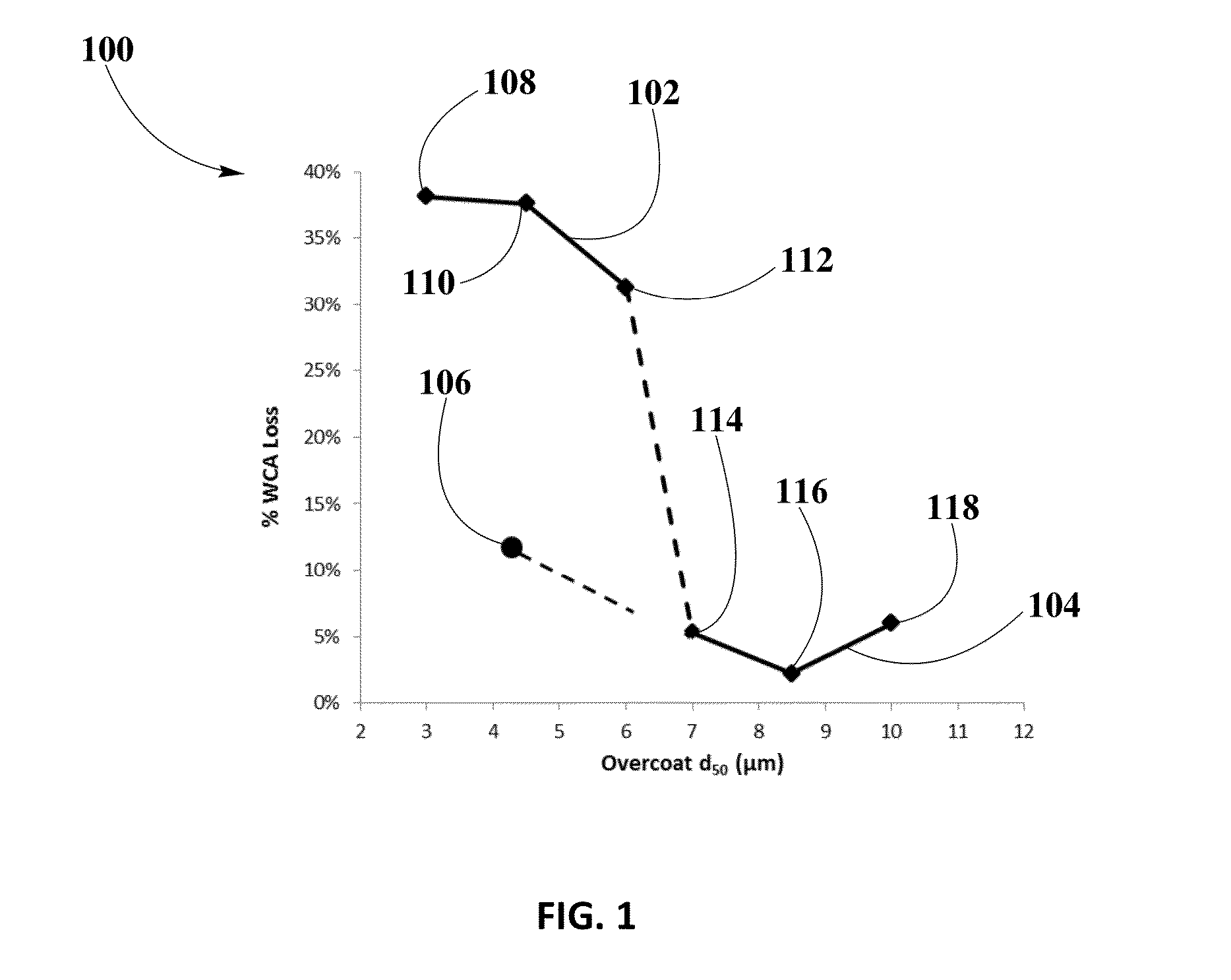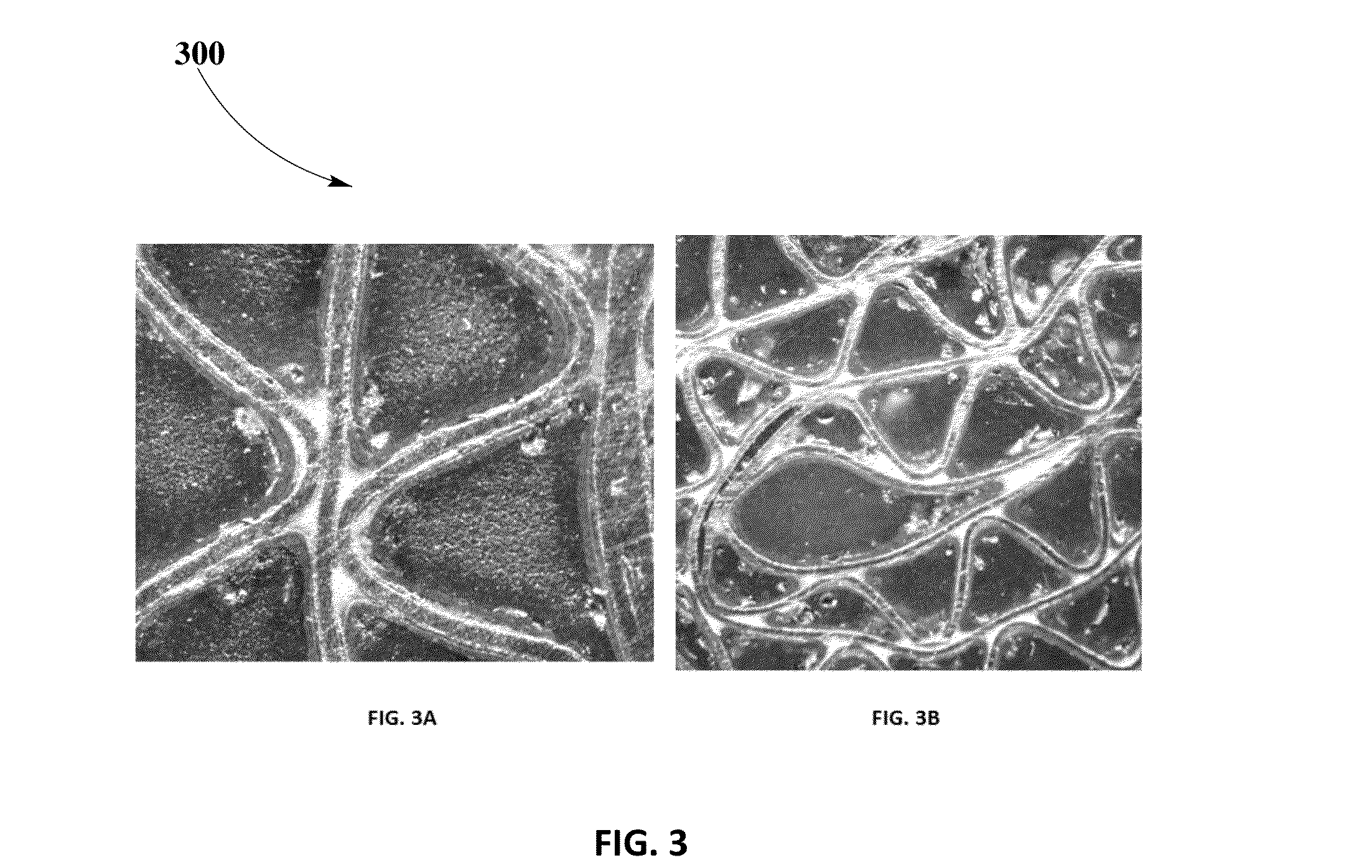Minimizing Washcoat Adhesion Loss of Zero-PGM Catalyst Coated on Metallic Substrate
a zero-pgm, catalyst technology, applied in physical/chemical process catalysts, metal/metal-oxide/metal-hydroxide catalysts, separation processes, etc., can solve the problems of not providing a desirable level of wca and catalyst activity, limit the application range of substrates, etc., to improve the performance and activity of zpgm catalyst systems, reduce wca loss
- Summary
- Abstract
- Description
- Claims
- Application Information
AI Technical Summary
Benefits of technology
Problems solved by technology
Method used
Image
Examples
example # 1
EXAMPLE #1
Washcoat Adhesion of Zero-PGM Catalyst on a Metallic Substrate
[0060]Example #1 may illustrate processing for ZPGM catalyst on a D33 mm×L40 mm, 200 CPSI metallic substrate. Accordingly, Zero-PGM catalyst samples may be prepared to include WC target loading of 80 g / L. WC may include any type of alumina-based binder, particle size within a range of about 6.0 μm to about 7.0 μm. OC may have a target loading of 120 g / L, including any type of alumina-based binder, OSM, and Cu loading of about 10 g / L to about 15 g / L, preferably 12 g / L, and Ce loading of about 12 g / L to about 18 g / L, preferably 14.4 g / L, OC particle size within a range of about 4.5 μm to about 5.0 μm, preferably, OC particle size, d50, in OC slurry of about 4.7 μm and 38% of solids in OC slurry, and pH of OC slurry within a range of about 5.0 to about 6.0. Samples may be aged at 900° C. for 4 hours under dry condition.
[0061]Verification of WCA loss may be performed using a washcoating adherence test as known in th...
example # 2
EXAMPLE #2
Effect of Varying the Rheology of OC Slurry Containing ZPGM
[0063]Example #2 may illustrate the effect of varying rheology of OC slurry for catalyst samples on a metallic substrate of a dimension of D33 mm×L40 mm, 200 CPSI. The first set of optimization parameters used in the preparation of catalyst samples as illustrated in example #1 may continue to be applied in this example illustrating the effect of varying rheology of OC slurry in WCA and catalyst performance. Thus, catalyst sample in example #2 may be prepared to include WC target loading of 80 g / L. WC may include any type of alumina-based binder, particle size within a range of about 6.0 μm to about 7.0 μm. OC may have a target loading of 120 g / L, including any type of alumina-based binder, OSM, and Cu loading of about 10 g / L to about 15 g / L, preferably 12 g / L, and Ce loading of about 12 g / L to about 18 g / L, preferably 14.4 g / L. The pH of OC slurry is within a range of about 5.0 to about 6.0 and OC particle size may...
example # 3
EXAMPLE #3
Effect of OC Particle Size Distribution of OC Slurry Containing ZPGM
[0066]Example #3 may illustrate the effect of varying the OC particle size distribution of OC slurry containing ZPGM for catalyst samples on a metallic substrate of a dimension of D33 mm×L40 mm, 200 CPSI. Particle size of OC slurry may be controlled by adjustment of milling time. Catalyst samples may be prepared according to same composition as described in example #1, including WC target loading of 80 g / L. WC may include any type of alumina-based binder, particle size within a range of about 6.0 μm to about 7.0 μm. OC may have a target loading of 120 g / L, including any type of alumina-based binder, OSM, and Cu loading of about 10 g / L to about 15 g / L, preferably 12 g / L, and Ce loading of about 12 g / L to about 18 g / L, preferably 14.4 g / L. The pH of OC is within a range of about 5.0 to about 6.0 and OC particle size within a range of about 7.0 μm to about 10.0 μm. Samples may be aged at 900° C. for 4 hours u...
PUM
| Property | Measurement | Unit |
|---|---|---|
| particle size | aaaaa | aaaaa |
| particle size | aaaaa | aaaaa |
| temperatures | aaaaa | aaaaa |
Abstract
Description
Claims
Application Information
 Login to View More
Login to View More - R&D
- Intellectual Property
- Life Sciences
- Materials
- Tech Scout
- Unparalleled Data Quality
- Higher Quality Content
- 60% Fewer Hallucinations
Browse by: Latest US Patents, China's latest patents, Technical Efficacy Thesaurus, Application Domain, Technology Topic, Popular Technical Reports.
© 2025 PatSnap. All rights reserved.Legal|Privacy policy|Modern Slavery Act Transparency Statement|Sitemap|About US| Contact US: help@patsnap.com



